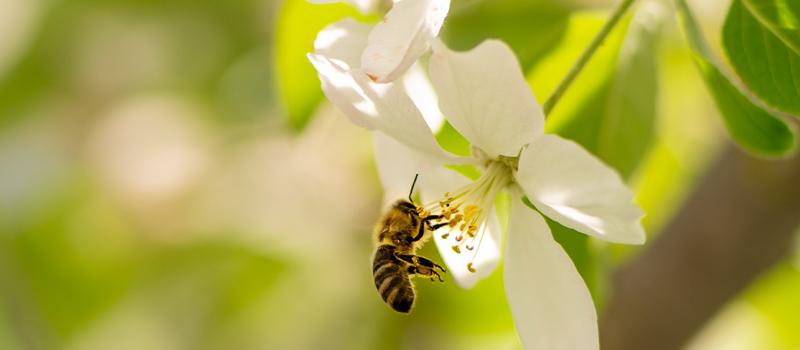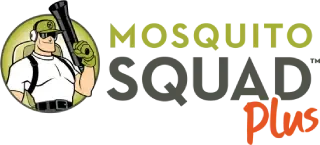How to Promote Pollinators While Keeping Mosquitoes at Bay
Posted by Mosquito Squad
May 17, 2023

As spring turns into summer, butterflies, bees, and pollinators aplenty are out and about searching for food and exploring your backyard. While you might be itching to get outside and see these beauties yourself, you shouldn't actually have to itch to enjoy your yard's wonders. In this blog, we highlight the best ways to promote beneficial insects to your lawn while limiting the number of mosquitoes buzzing about.
What is Pollination? Why are Pollinators important?
Pollination describes the process of transferring pollen, the microspores of the plant that help in plant fertilization. Without pollination, plants could not create fertile seeds or produce fruits, and future plant generations would decline. While some plants can self-pollinate by transferring their pollen from the anther to the stigma without assistance, almost 80% of the world's plants require a pollinator to assist with cross-pollination. Scientists also estimate that 35% of the world’s food crops require a pollinator – this means for every 1 in 3 crops, we have a pollinator to thank.
There are many pollinators that can visit your lawn, and pollinator presence will change throughout the year. Pollinators are not just insects – bugs, birds, and bats can all help keep plants healthy and fertile in your yard. Insect pollinators are the most abundant pollinators in nature, so it is important to understand how to attract them and create a healthy backyard ecosystem.
Bees
The most iconic pollinators are bees. Honeybees and bumblebees are proficient pollen collectors and even have a unique body part called a pollen basket they use during pollination. When a female bee (that's not the queen) travels from flower to flower, she harvests pollen by collecting it with fine hairs on her hind legs. She then brings the pollen back to her hive, which will be used as food for larval bees.
To attract native bees, try implementing these tips to your lawn:
Create Foraging Areas with Native Plants
- Bees need to forage for flowering plants to collect pollen for their colonies. Adding native, blooming plants to your lawn provides bees with designated foraging areas and spruces up your yard!
- Bees need to gather pollen from various flowering plants, so the more diverse you make your lawn, the better! Lavender, cosmos, aster, and goldenrod are vibrant plants that bees love.
Be Mindful of Nesting Sites
Attracting foraging bees is essential to maintaining a diverse lawn, but allowing bees to nest nearby your yard supports future generations of pollinators! Consider adding bee boxes to give nearby bees some shelter and a potential colony site. Bee boxes can be small and decorative, like birdhouses, another excellent way to add some spark to your outdoor space.
Add Cover Crops to your Yard
- Bees, like most arthropods, are susceptible to drying out and dying if they stay in the sun too long. Cover crops provide bees with shaded areas where they can rest and escape the sun. Consider adding flowering cover crops like clover, buckwheat, or canola.
Butterflies
In addition to their beauty, butterflies are also expert pollinators. Though they don't have specialized pollen-catching body parts, adult butterflies have hairy bodies and legs that help them collect pollen as they travel from flower to flower. Butterflies also use their long, straw-like mouthpart called a proboscis to drink nectar from the flowers they visit. When they drink, some pollen gets transferred from their mouthpart to other flowers they drink from along their route.
To attract butterflies, try implementing these tips to your lawn:
Add Native Flowering Plants
- Butterflies will feed from a variety of flowering plants, but they are most proficient with wildflowers. Because they do not collect pollen like bees, butterflies are not picky about where their nutrients come from. Research your favorite native wildflowers and add them around your lawn.
- For the most butterfly activity throughout the year, consider adding plants with continuous bloom in mind. Long-blooming flowers like coneflowers, zinnia, and petunias will stay flowering longer than annuals and provide butterflies with food throughout the warm season.
Add Native Caterpillar Host Plants
- Caterpillars need different food sources than adult butterflies. Since they don't have wings or a proboscis, caterpillars can only crawl and chew on nearby plants. Caterpillars are also picky eaters and will only eat certain host plants. By researching the butterflies native to your region and finding their caterpillar host plants, you can provide caterpillars with food and promote future generations of butterflies!
Provide Basking Areas
- It takes a lot of energy for butterflies to fly from plant to plant, and sometimes butterflies need to rest. Basking is a behavior where butterflies rest in clear, sunny areas to warm their wings before flight. Keeping some areas of your lawn clear and adding a few flat rocks can help butterflies linger in your lawn for longer (and also help you get some great pictures of resting butterflies!).
What about Mosquitoes?
Mosquitoes are considered minor pollinators, as male mosquitoes are exclusively nectarivores. Even though it's only the female mosquitoes that take a blood meal, the potential for mosquito bites to lead to discomfort, infection, and disease makes mosquitoes more of a threat to your lawn than a beneficial insect.
Luckily, there are many things you can do to limit the number of mosquitoes living and breeding around your yard:
Remove Standing Water
- Mosquitoes lay their eggs in standing bodies of water. Removing water that pools around your yard in tree holes, ditches, gutters, and tarps can help reduce mosquito breeding areas and decrease the mosquito population in your backyard.
- Standing water can also include water for pets and bird baths. When your furry friends aren't playing outside, dump out any water left in their bowls. For bird baths, change out the water frequently throughout the week.
Keep a tidy lawn
- Mosquitoes also need resting areas like our pollinator friends, though their small size allows them to occupy cluttered areas easier. Leaf litter piles, wood piles, and other yard debris can protect mosquitoes and help them thrive in your lawn.
- Keeping a clean-cut lawn can also help reduce mosquito presence, but be mindful not to cut back any cover plants you added. Focus on removing undesired weeds and long grasses to help reduce mosquito resting areas.
Promote beneficial insects
- Predatory insects like ladybugs and praying mantids eat the smaller, annoying bugs like aphids and mosquitoes. By keeping a healthy and diverse environment in your lawn, you can attract these insects to help eat pesky mosquitoes.
STILL STRUGGLING TO CONTROL MOSQUITOES? OUR SQUAD CAN HELP!
Even if you try every DIY in the book, mosquitoes are robust and can be hard to control by yourself. Mosquito Squad puts pollinators first with our environmentally conscious approach while combatting mosquitoes and other pests from your lawn. Contact your local Mosquito Squad today or give us a call at (810) 202-9771 to learn more about our barrier treatment options.
